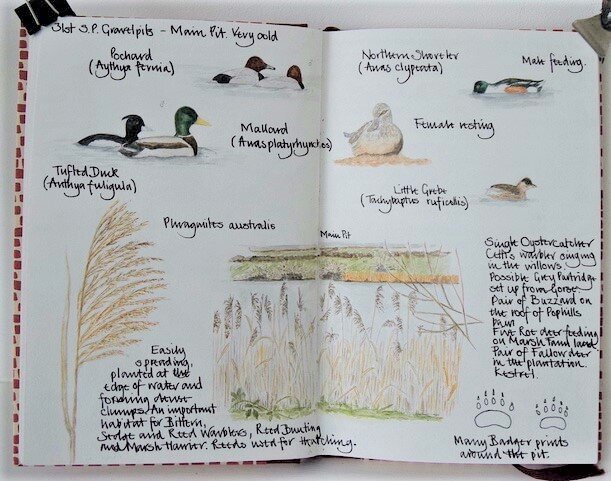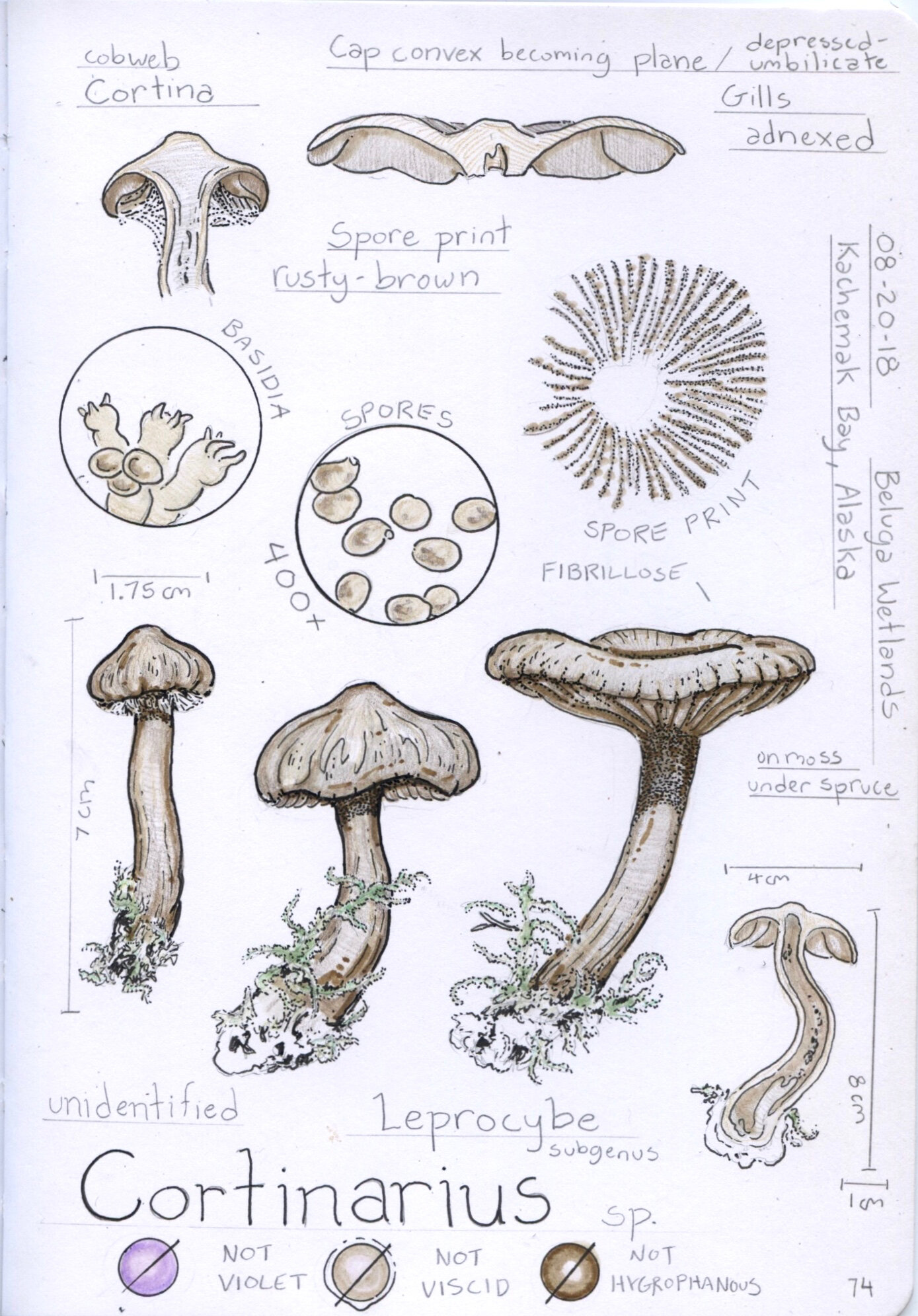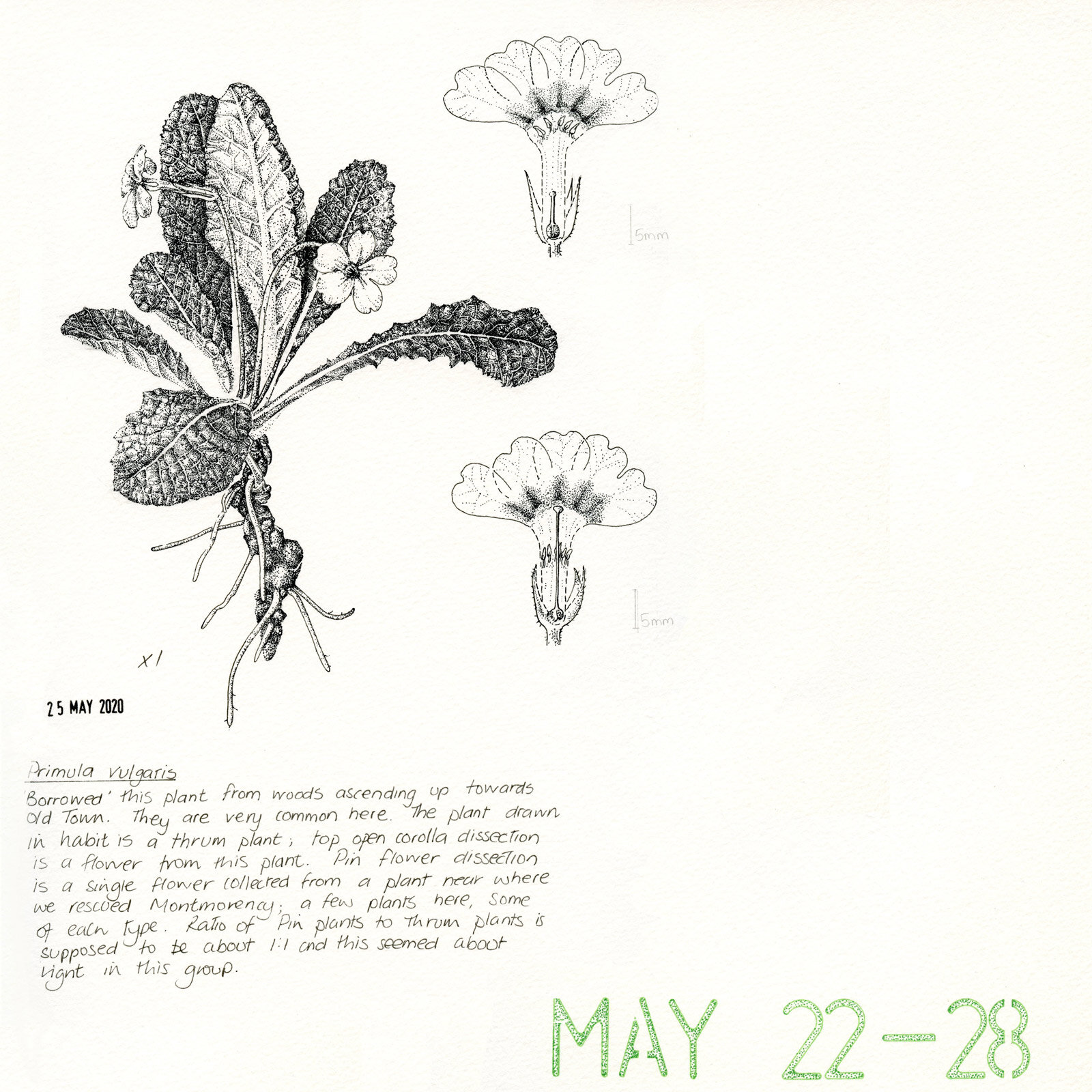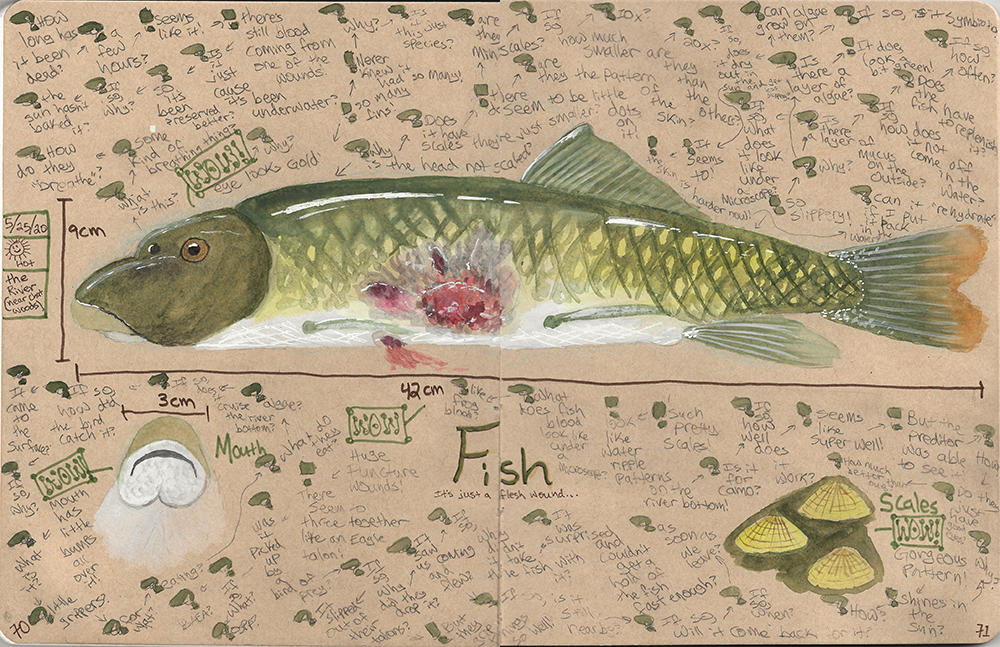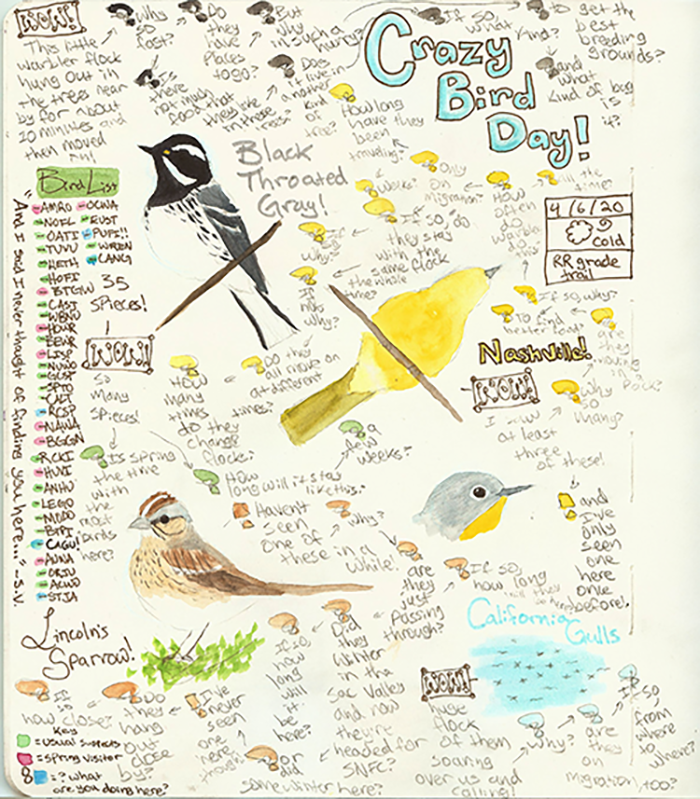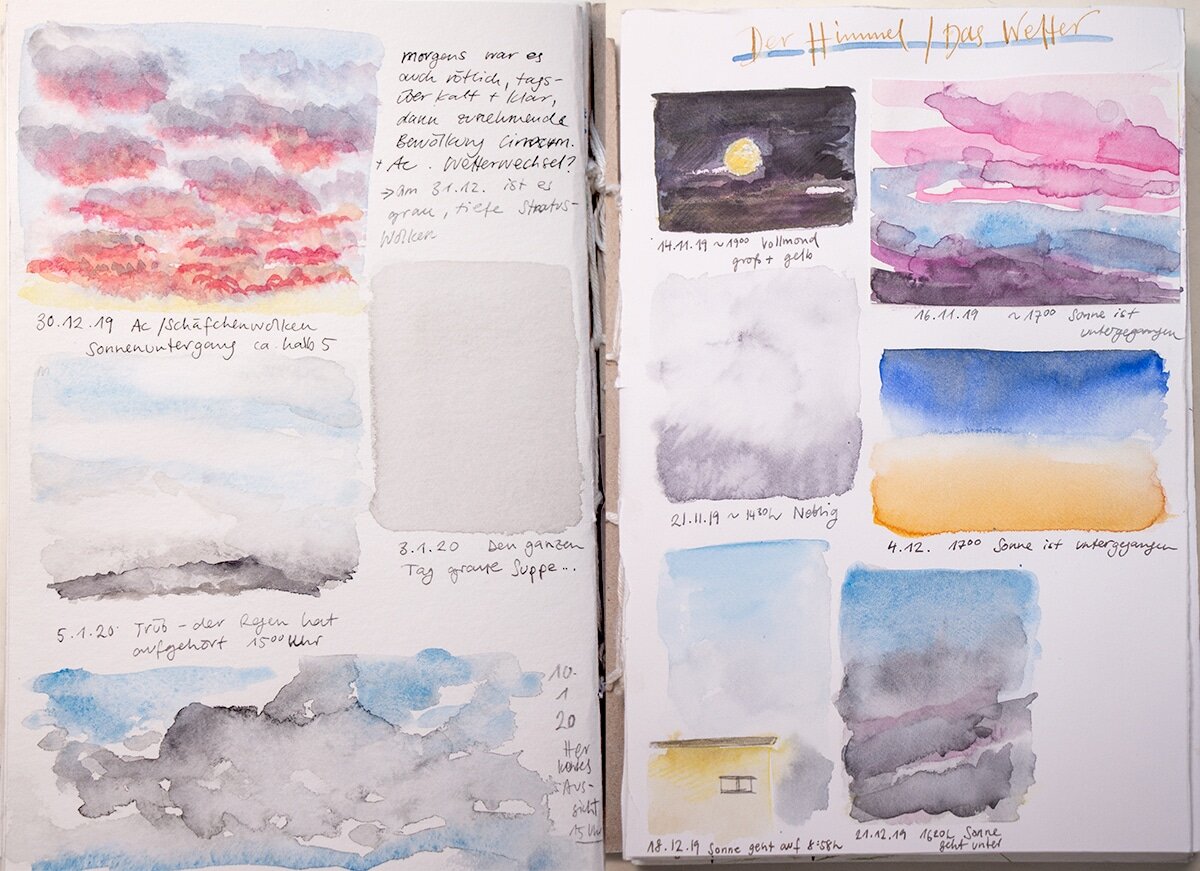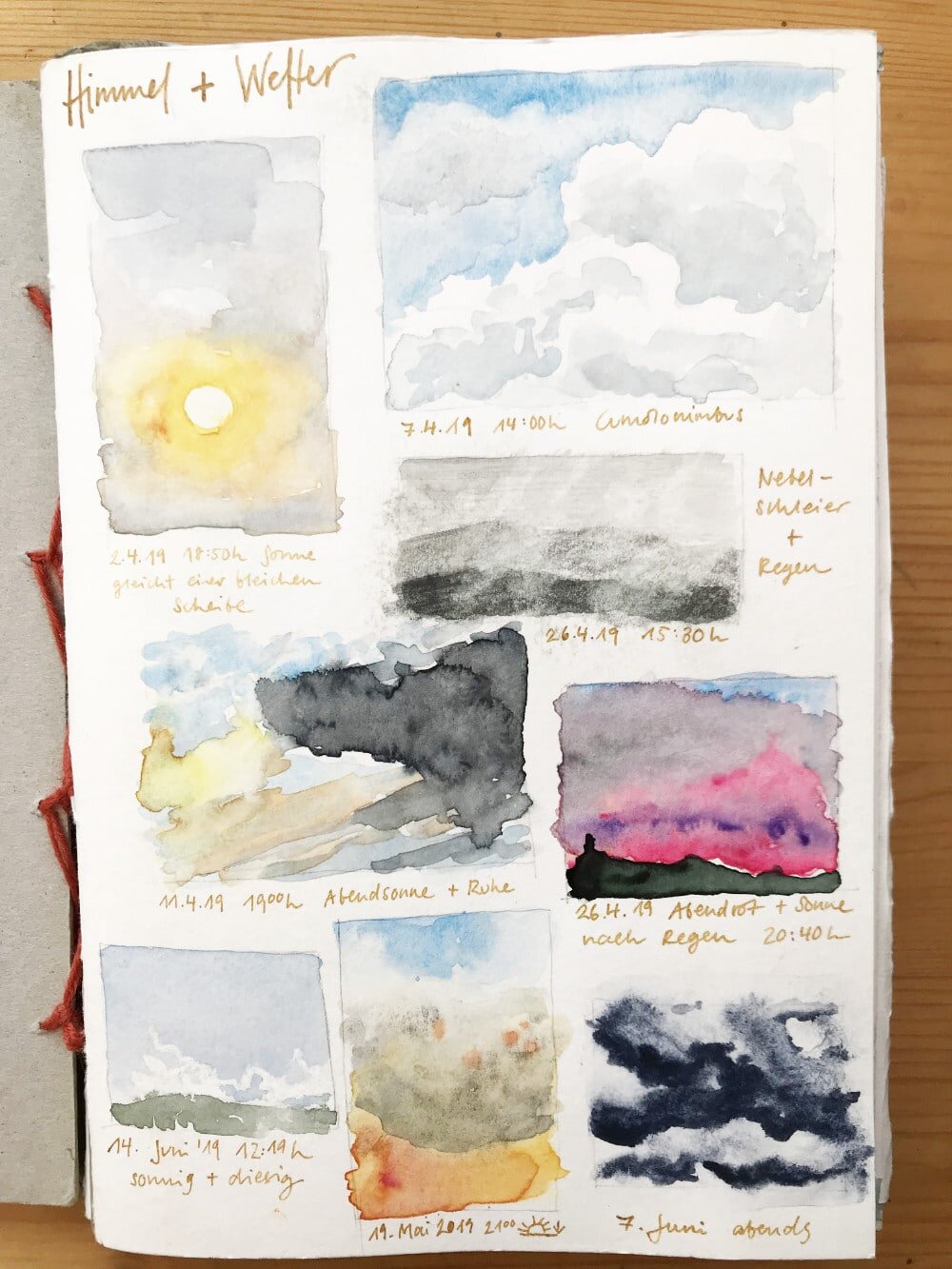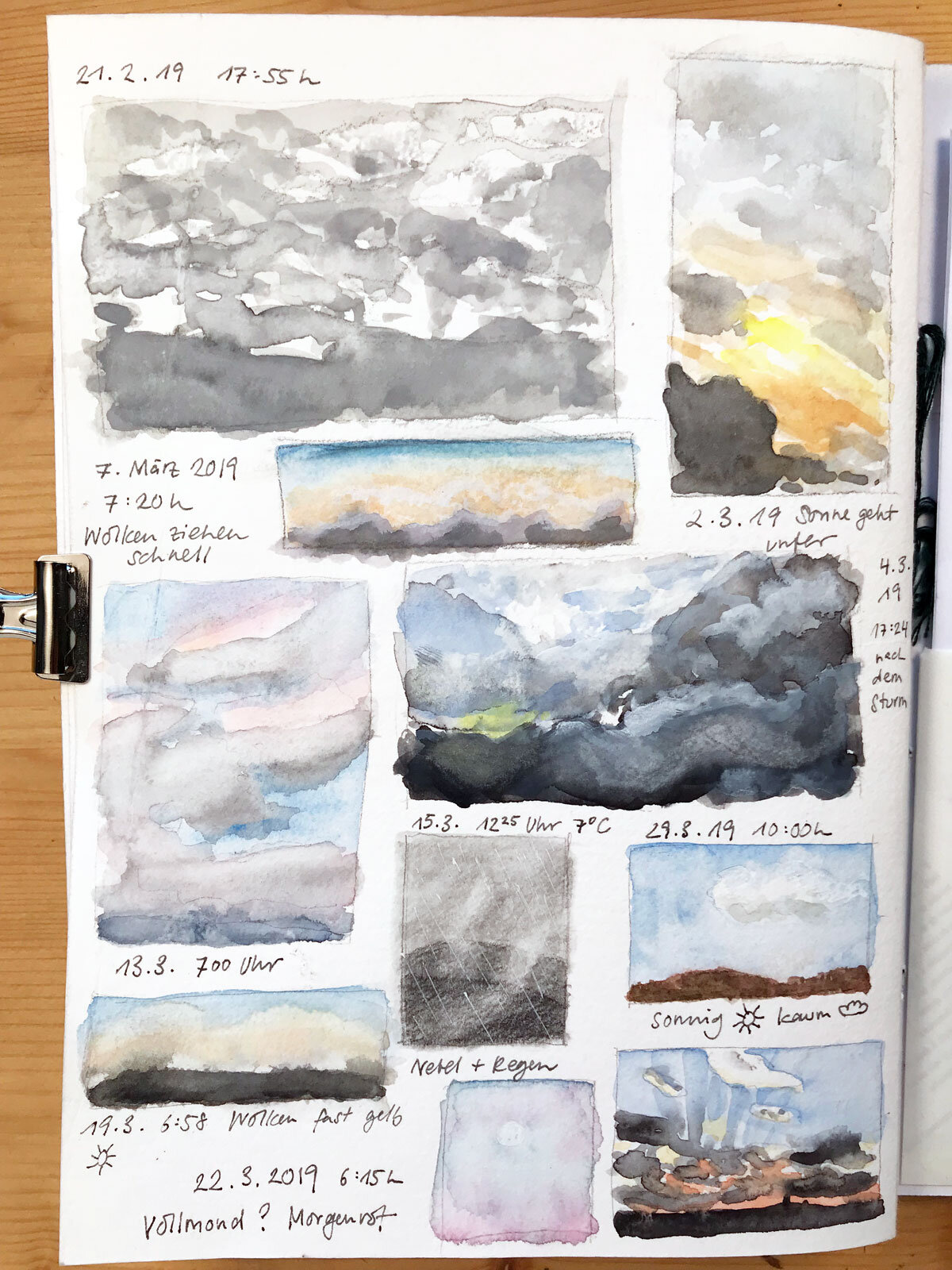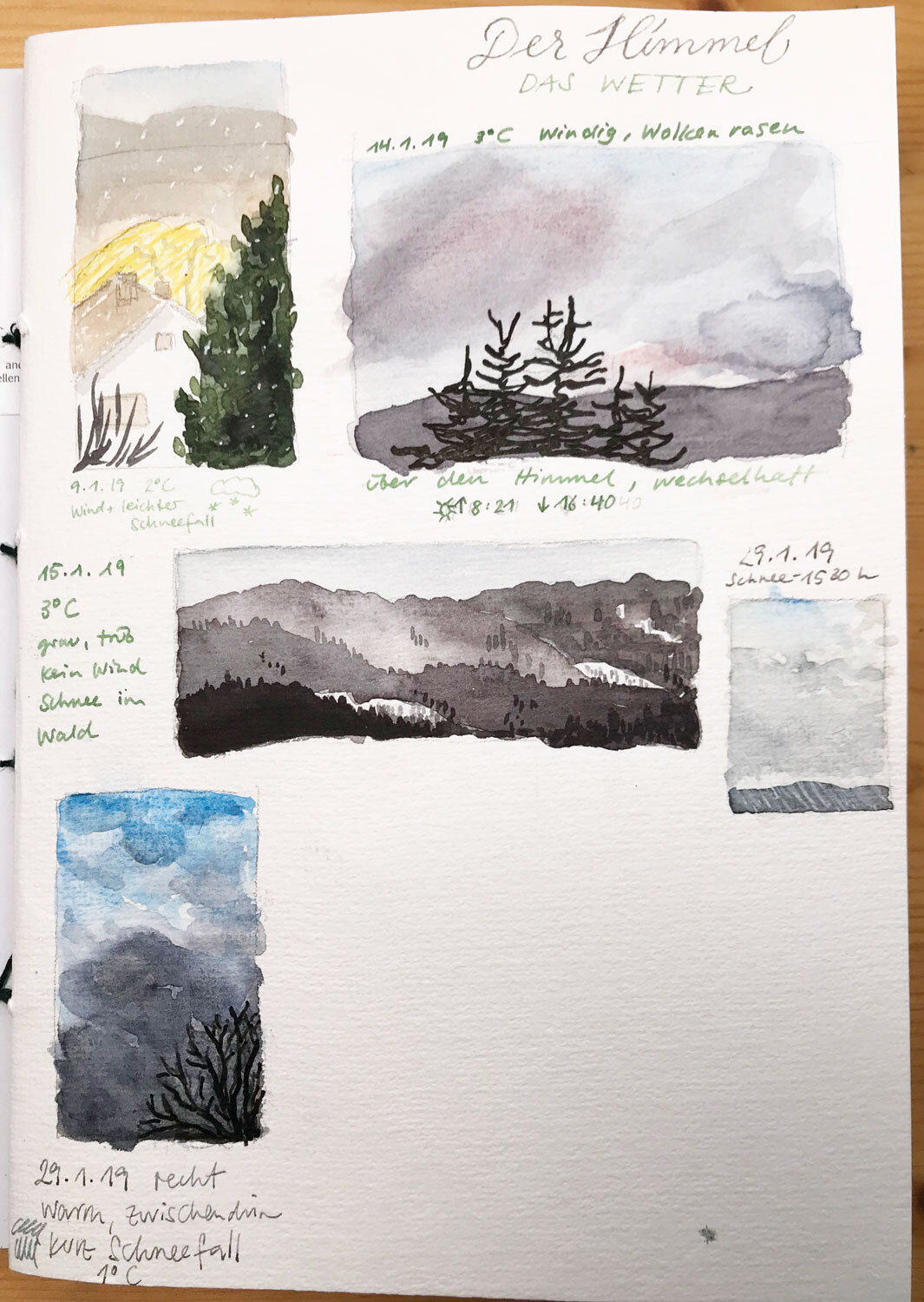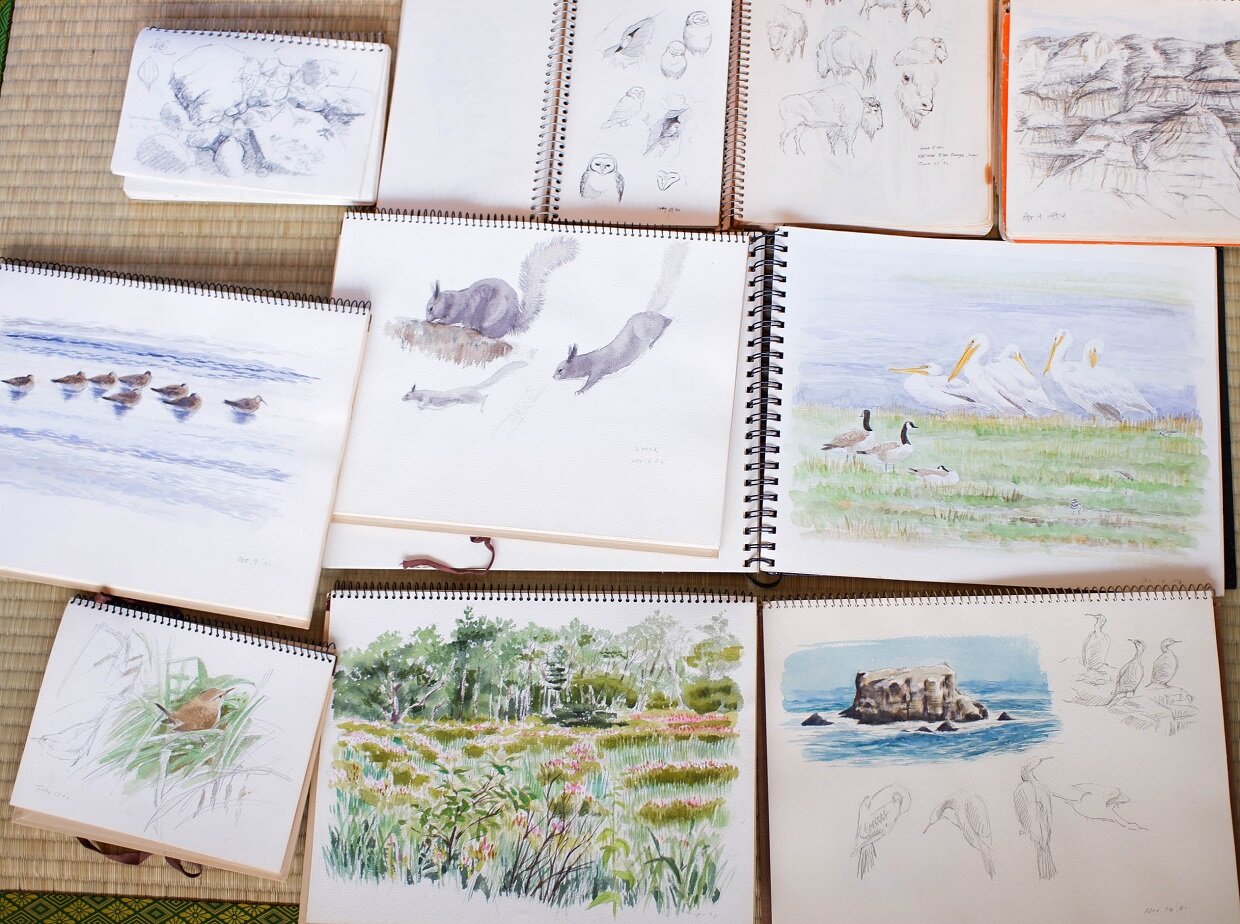As nature journalers we are, I think, guardians of the natural history we record. It is our observations that make us part of the citizen science community and, hopefully, when we post to social media, we are able to make others aware of the natural world and the need to preserve it. With nature journaling there is no “one size fits all”. It doesn’t matter how someone else writes or draws; we all have our own individual styles, but our similarities are greater than our differences. We are all observers and recorders.
A love of nature was instilled into me early in life by my father and grandfather. Both were originally townsmen who became good countrymen. On long walks with their guidance, my sister and I learnt to identify plants, birds, and animals. In rural Kent we roamed free and, guided by the seasons, were able to collect flowers and wild fruits. We knew where to find the first primroses and banks of sweet violets, the best blackberries, and then sweet chestnuts in autumn. Looking back on this time, it was quite magical and a thing that many children of today miss out on as parents are now too scared to let them out on their own. When we moved down to Devon, we wandered the lanes and fields quite free and without fear, observing all the time.
I was, and am still, enchanted by the Ladybird books: What to look for in… with the marvelous Charles Tunnicliffe illustrations. These had a huge impact on me as well as British Wild Animals by David Stephens. My Grandfather bought me this book long before I could read.
It wasn’t until 2003 that I began keeping a nature journal. I started keeping lists of birds I had seen when I was out and about, but I always left room at the side as I had in my mind that I would add illustrations at some stage; however, this didn’t happen for another ten years. By this time the lists had progressed to making notes and including plants; photographs were added and so the pages became a journal. The initial book took several years to fill.
For a few years, I lived in North Vancouver and kept a journal of the nature sightings–mainly in my garden. It was fascinating to see different wildlife. I didn’t wander around so much, as some of the local wildlife was known to be on the dangerous side. My journal from that time is largely made up of photographs, but it is a journal nevertheless.
On returning to England, I settled on the Warwickshire-Worcestershire border and my journals have really become a big part of my life. It took a while before I settled on the style the journals take now, but they are constantly evolving, and I don’t have any fast and hard rules as to how I illustrate. I still make pages of notes, which I find are essential as they remind me of things I haven’t illustrated and natural events that have taken place. I have just started to keep a calendar of daily weather conditions and temperatures, which, I hope in future years, will show how the climate has changed. I continue to wander around the fields uninterrupted. A walk is never simply a walk; I always have my binoculars and camera with me so that I have images to draw from. I look forward to the seasons changing so I can record what is happening and refer back to the previous year to see if there are changes. Some things change little. I know from my records that about May 13 the swifts will be back–although one year they didn’t appear until May 29 due to storms over the Sahara. Other things are changing quite rapidly: Hazel Catkins appear much earlier. As a child Catkins were associated with March and Spring; my first sighting for this season was at the end of November–four months early!
Currently with the restrictions that COVID-19 has brought, it is not possible to go further afield and record different areas in my journal. So, I hope to make a more detailed study of places within walking distance. I thoroughly enjoy the recording process, I do it for my own pleasure and to leave a record for future generations of my family.
Nicola Allan is a retired Food and Textiles teacher. Her journal artwork is done mainly in watercolour and pencil. Work is either done from samples or photographs she has captured.
Nicola posts her journal pages regularly on Instagram.


